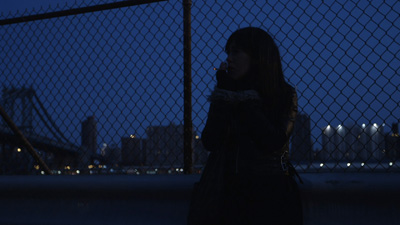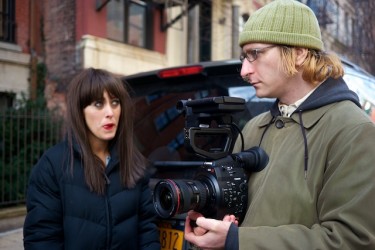 Back to selection
Back to selection
Video: Both Ends and Thoughts on the Canon EOS C300

 I don’t have too much to say about the Canon EOS C300 as an objective review. Others have written detailed technical pieces. There’s no need for another.
I don’t have too much to say about the Canon EOS C300 as an objective review. Others have written detailed technical pieces. There’s no need for another.
Canon recently allowed me to play with their new camera for a couple of days, and the result is Both Ends, a sort of noir-lite short film that I directed. My intent in using the camera was to apply it in a purely practical manner: a narrative short that takes place over the course of a single day in multiple locations with differing lighting situations — all photographed using entirely available light.
The one unusual aspect of my shoot that I’ll point out was that the lenses I used were both f/2.8, not high-speed primes. When I got the camera loan from Canon, I requested their 16-35mm zoom, and they also gave me their 24-70mm as well. I’d initially intended to use my Nikon primes which open to f/1.8, but the allure of using the 16mm, which the sensor crops to a 24mm, was too enticing. Rather than switching camera ISOs to adapt between lenses, I just stuck with the two zooms to maintain continuity within scenes. The ISO ranged between native 850-3200 depending on the conditions. (If I’d used high-speed primes I doubt I would’ve gone past ISO 1600, and probably would have shot most of it at 850.)
 The semi-radical conclusion to this approach was that I shot a low-light practical source film without high-speed lenses. The camera alone made this possible. Yes, there was noise in certain high ISO shots, but that was mostly visible when the lighting was indirect and extremely low-contrast, as opposed to it being entirely ISO-based; high-contrast lighting in shots using the same ISO didn’t yield particularly noticeable noise. I didn’t mind the noise, which I found not unpleasant, and kept the de-noising to a minimum. (One night interior was lit entirely with a single 40 watt lamp bounced off the ceiling 5 feet from the actors. Another was shot in a bar where I was told the bulbs were mostly 25 watt.)
The semi-radical conclusion to this approach was that I shot a low-light practical source film without high-speed lenses. The camera alone made this possible. Yes, there was noise in certain high ISO shots, but that was mostly visible when the lighting was indirect and extremely low-contrast, as opposed to it being entirely ISO-based; high-contrast lighting in shots using the same ISO didn’t yield particularly noticeable noise. I didn’t mind the noise, which I found not unpleasant, and kept the de-noising to a minimum. (One night interior was lit entirely with a single 40 watt lamp bounced off the ceiling 5 feet from the actors. Another was shot in a bar where I was told the bulbs were mostly 25 watt.)
I shot in the C-Log mode, which I rather liked. To my eye it made the dark interiors look as if they’d been smoked. I was going for a more organic look (I’ll define organic as: analog), and I found that the slightly flat C-Log naturally accomplished 80% of my basic color-correction. In most situations, all I did in post was to pull down the density and blacks a bit using Magic Bullet Colorista II. There were certainly situations that required more extensive work like keying or adjusting skin tones with Mojo or applying masks or heightening the contrast, but those were all shot-specific decisions and not applicable to the footage as a whole. The one thing I wasn’t interested in was an ultra-vivid, high-contrast HD image.
Another tech spec I should note was that, being as we were in a rush to cram the entire short into a single 16-hour marathon (even though I really needed two days), after the first couple of shots, we realized the camera was accidentally set to record at 35 Mbps instead of the maximum 50 Mbps. It was early enough in the shoot that we could’ve switched it. But we made the call to stick with 35 Mbps just in case we’d later notice continuity issues. (I also subsequently got a pick-up shot with my 7D.)
I enjoyed working with the camera and found it essentially a souped-up hybrid of my 7D and previous camcorders like the HVX200. If I use the camera again, I’d love to give it a go with high-speed primes like the upcoming Cinema EOS set, or, if it’s a PL mount version, I’d like to try Master Primes. But the point is, really, with a camera like this, you don’t necessarily need them.
“Both Ends” from Filmmaker Magazine on Vimeo.
Created by Jamie Stuart.
Produced by Laki Latinka Igrutinovic.
Starring Lauren Currie Lewis.
